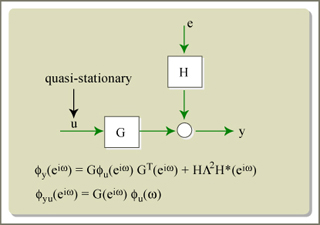Course Description
This course is offered to graduates and includes topics such as mathematical models of systems from observations of their behavior; time series, state-space, and input-output models; model structures, parametrization, and identifiability; non-parametric methods; prediction error methods for parameter estimation, …
This course is offered to graduates and includes topics such as mathematical models of systems from observations of their behavior; time series, state-space, and input-output models; model structures, parametrization, and identifiability; non-parametric methods; prediction error methods for parameter estimation, convergence, consistency, and asymptotic distribution; relations to maximum likelihood estimation; recursive estimation; relation to Kalman filters; structure determination; order estimation; Akaike criterion; bounded but unknown noise model; and robustness and practical issues.
Course Info
Learning Resource Types
notes
Lecture Notes

A model for noisy outputs taken from the course lecture notes. From this model, you can derive very important relations in system identification. (Figure by MIT OpenCourseWare.)








